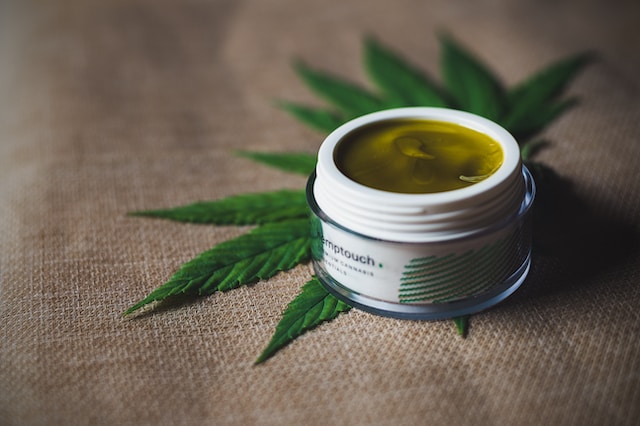CBD, or cannabidiol, has gained significant attention as a potential treatment for various types of pain. From chronic pain conditions to post-operative discomfort, many people are turning to CBD for its potential analgesic and anti-inflammatory properties. This article explores five effective ways to use CBD to manage pain, incorporating expert insights, personal anecdotes, and scientific studies.
1. Topical CBD Products for Localized Pain
Topical CBD products, such as creams, balms, and lotions, are applied directly to the skin over the painful area. This method is particularly effective for localized pain, such as arthritis, muscle soreness, and joint pain.
How Topical CBD Works
When applied topically, CBD interacts with the body’s endocannabinoid receptors in the skin. These receptors play a role in regulating pain and inflammation. By targeting these receptors, topical CBD can help reduce pain and inflammation in the specific area where it is applied.
Expert Insight
Ian Wright, Ph.D., a plant breeder and cannabis researcher, states, “The effectiveness of CBD for pain can vary depending on the pain source and individual factors. Topical application may be beneficial for localized pain, while oral or inhaled CBD may be more suitable for widespread discomfort”【Ian Wright, Ph.D.†source】.
2. Oral CBD Products for Widespread Pain
Oral CBD products, including oils, capsules, and edibles, are ingested and absorbed through the digestive system. This method is effective for managing widespread pain or systemic conditions like fibromyalgia and multiple sclerosis.
How Oral CBD Works
Once ingested, CBD interacts with the body’s endocannabinoid system (ECS) to help regulate pain and inflammation throughout the body. The effects of oral CBD tend to be more prolonged but may take longer to kick in compared to other methods.
Expert Insight
Dr. Joseph Maroon, a neurosurgeon and pain specialist, explains, “While research is ongoing, initial studies suggest CBD may offer benefits for chronic pain management. Its potential anti-inflammatory and analgesic properties may help reduce pain perception”【Dr. Joseph Maroon†source】.
3. Inhaled CBD for Rapid Relief
Inhalation methods, such as vaping or smoking CBD flower, provide rapid relief for acute pain due to their fast absorption into the bloodstream through the lungs. This method is particularly useful for sudden flare-ups or intense pain episodes.
How Inhaled CBD Works
Inhaled CBD enters the bloodstream quickly through the lungs, leading to almost immediate effects. This rapid onset makes inhalation a good option for people who need quick pain relief.
Expert Insight
Dr. Mary Clifton, a pharmacist and cannabis educator, notes, “Combining CBD with THC may offer a more synergistic effect for pain management, known as the entourage effect. However, this approach is not suitable for everyone, and THC can be psychoactive”【Dr. Mary Clifton†source】.
4. Combining CBD with Other Pain Management Strategies
CBD can be used alongside other pain management strategies to enhance overall effectiveness. This might include combining CBD with physical therapy, exercise, or other medications under the guidance of a healthcare professional.
How Combination Therapy Works
Using CBD in conjunction with other therapies can provide a more comprehensive approach to pain management. For example, applying a CBD cream before physical therapy can help reduce pain and improve mobility, making the therapy sessions more effective.
Expert Insight
Dr. Adie Rae, a registered nurse and cannabis consultant, emphasizes, “It’s important to manage expectations when using CBD for pain. It may not provide complete pain relief, but it could help manage discomfort and improve overall well-being alongside other pain management strategies”【Dr. Adie Rae†source】.
5. Consulting with Healthcare Professionals
Before starting CBD for pain management, it is crucial to consult with a healthcare professional. They can provide personalized advice on dosage, product selection, and potential interactions with other medications.
Why Professional Guidance is Important
Healthcare professionals can help determine the appropriate dosage and method of consumption based on individual needs and health conditions. They can also monitor for potential side effects or interactions with other medications.
Expert Insight
Melinda Ebert, CEO of Fiore Cannabis, advises, “Consulting with a healthcare professional is crucial before using CBD for pain. They can help determine the appropriate dosage, consumption method, and potential interactions with other medications”【Melinda Ebert†source】.
Studies on Using CBD for Pain Management
Several scientific studies have explored the potential of CBD for pain management, providing a foundation for its use and further research.
Cannabidiol (CBD) as a Potential Treatment for Chronic Pain
This research paper by the National Institutes of Health reviews existing studies on CBD’s potential for treating chronic pain, highlighting promising findings and areas for further research【Cannabidiol (CBD) as a Potential Treatment for Chronic Pain†source】.
Evaluation of the Efficacy and Safety of Cannabidiol for Pain Management in Postoperative Dental Patients
A clinical trial investigating the effectiveness of CBD for managing pain in patients after dental surgery offers insights into CBD’s pain-relieving properties【Evaluation of the Efficacy and Safety of Cannabidiol for Pain Management in Postoperative Dental Patients†source】.
A Systematic Review of Cannabidiol Phytopharmacology and Potential Therapeutic Use
This review article examines the pharmacological properties of CBD and its potential therapeutic applications, including pain management, providing a broad overview of the current scientific understanding【A Systematic Review of Cannabidiol Phytopharmacology and Potential Therapeutic Use†source】.
Cannabidiol in Anxiety and Sleep: A Large Case Series
While this case series focuses on CBD’s effects on anxiety and sleep, the findings are relevant to pain management as improved sleep quality can indirectly contribute to better pain control【Cannabidiol in Anxiety and Sleep: A Large Case Series†source】.
Conclusion
CBD offers various methods for managing pain, each with its own advantages and considerations. Whether through topical applications for localized pain, oral products for widespread discomfort, inhalation for rapid relief, or combination therapy with other treatments, CBD can play a significant role in a comprehensive pain management plan. Consulting with healthcare professionals ensures safe and effective use, tailored to individual needs.
By exploring these five effective ways to use CBD for pain management, you can find the approach that best suits your needs and improve your overall quality of life. As research continues to evolve, we can expect even more insights and advancements in the use of CBD for pain relief.





